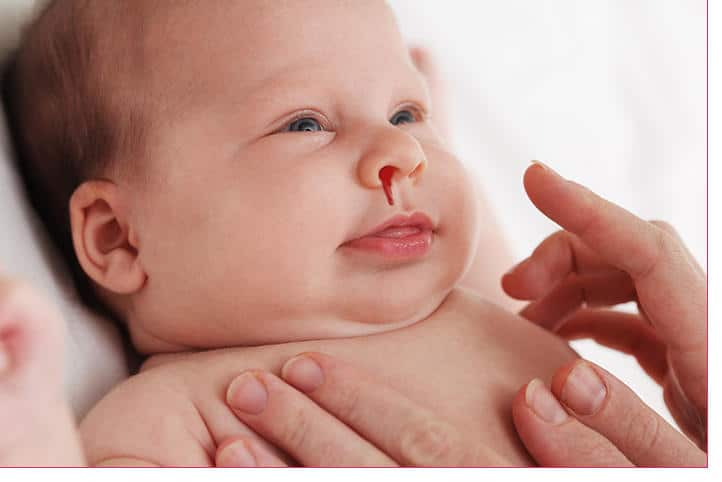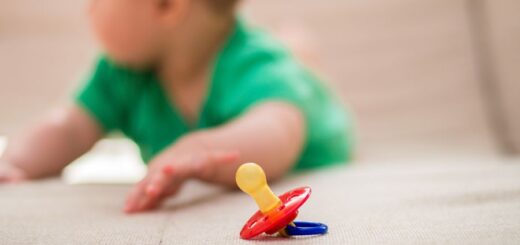Nosebleed causes in child
Nosebleed; bleeding from any part of the layer called mucosa, laying the inside of the nose. Nasal bleeding is divided into two. Anterior nosebleeds: Nasal bleeding in children and young adults is usually in this group. It is mainly due to the cracking of the capillaries in the anterior and middle part of the nose, about 1 m behind the tip of the nose and is usually unilateral. This type of bleeding is also called simple nosebleeds. Posterior nosebleeds: Nasal bleedings in older and older patients are generally in this group. The causes of nosebleed can be many. Don’t panic now. Continue reading our article
More severe stiffness, high blood pressure, clotting problems, aspirin and aspirin-like drug intake, vitamin K deficiency, alcohol intake and liver disorders are due to more serious reasons. These bleedings are mostly bilateral and cannot be stopped easily. These bleedings are also called segmenting or complex nosebleeds. Not very common in children.
Anterior nosebleeds in children and young adults are usually unilateral; sometimes double-sided. It is mostly caused by dry media. Dry and warm room air dries out especially in winter. This dry air causes the so-called mucosa in the nose to dry and crust. Because the veins in the anterior nasal region are thin and close to the surface, sneezing of the nose, sneezing, playing with the nose with severe coughing, small touches on the nose, removing the shells in the nose can easily nosebleed causes .
Causes of the most common nosebleed in children
- Dryness and crusting in the nose
- Allergy to itching
- Upper respiratory tract infections (such as cold, flu, pharyngitis, sinusitis enfeksiyon)
- Severe blowing, sneezing
- Blows to the head and nose
- Curvature of nasal bone and cartilage
- Using nasal spray with cortisone
- Mixing nose with fingers
Relevant post >> Can you eat deviled eggs while pregnant?
WHAT CAN BE DONE FOR NOSEBLEEDING ?
- First, panic should not be done.
- The child should be seated in a chair and the head should lean slightly forward.
- The nose should be squeezed between the head and forefinger for 5 minutes from the front of
- the nose which is soft under the nasal bone.
- If the nose is pressed for 5 minutes and bleeding is continued, the nose should be pressed again for 5 minutes.
- After stopping the bleeding, chilled water or tap water should be cleaned gently and the clots should be removed.
- After the bleeding, a moisturizing cream should be applied into the nose for 3-5 days.
WHAT TO DO TO PREVENT THE REPRODUCTION OF NOSEBLEEDING
- The nose should not be placed, the nose should not be mixed.
- It shouldn’t be so violent, not sneezed.
- Nasal obstruction should be cleaned with saline water, which we call saline.
- Care should be taken to ensure that the room where the child is in is not too hot and the air is dry.
- The temperature of the environment should be 20-23 ° C in winter and 45-50% humidity.
- The child should be bathed with warm water and the bath water should not be too hot.
- Children with nosebleeds should not be taken out in very hot weather, especially at noon.
- If you need to go out; the umbrella should go out and the child should be wearing a hat with a shield.
- You should not give your child aspirin and aspirin-like medicines without consulting your doctor.
WHEN THE NOSEBLEEDING APPLY TO THE DOCTOR
If the nose bleeds frequently, If bleeding cannot be stopped after 2-3 minutes 5 minutes If the head is slightly forward toe, blood spitting, blood vomiting, If breathing is difficult, If you feel bad, dizzy and feeling faint, If there is bleeding from other places other than the nose (such as urine, feces), If there is bruising, rotting or bleeding even in light bumps, If there is a 38.5 degree fever with rash on the body next to the nose bleeding A doctor must be consulted.
Attention : DO NOT MAKE THEM IN NOSEBLEEDING
- Do not throw back the head of your child.
- Do not lay your child on the back.
- Please , Do not stick things like cotton, gauze, napkins.
- Do not wet your child’s head.
- Don’t put ice on your nose, face, head, neck.
The essence of the word: BE CAREER, DO NOT PANIC. The blood flowing from the nose is not usually very high and does not reach the dimensions that would endanger life.
Do not forget that tightening the soft part under the nasal bone with the thumb and forefinger for 5-10 minutes prevents up to 90% of nosebleeds.
Our previous article Blocked tear duct in an infant: Symptoms and Treatment in the title blocked tear duct baby, blocked tear duct infant ve eye cold symptoms in babies information is provided..

Hello, I’m Dorothy. I love writing and researching articles. Reading books about baby health, care and pregnancy are my favorite. I will be sharing delicious and healthy information on food and baby food during pregnancy.












Very helpful..thank you so much for the info x
Thanks for the info! Helpful!
Very important information. Good
Very informative thank you
Tank you .verry informative
The information is very accurate this explains why i had so many nose bleeds as a child.
Thank you very much for this article! Super helpful information 😄👏🏼
Thank you very much for this article! Super helpful information 😄👏🏼
Very important information! Please pass along!
Very informative thank yo
Very informative. Good read for parents.
I read the article, it is easy to understand and we can put the recommendations into practice if necessary.
Thank you for these tips.
Très intéressent !
Very informative. Thank you!
Excellent information– thanks for posting this.
Wow! Nice article
Great informative read … well written
Very informative article.
today in my retail job: lady who does astrological face reading told me she can tell by my nose that i’ve faced man…
_ Went to see Harry Potter and the Cursed Child on Broadway…part 1 tonight! I’ve waited a year caus…
can’t believe a guy in my class today helped me with my nosebleed and I said ‘thank u so much ur my new best friend…